What Hi-Fi? Verdict
Clearer and punchier than its Award-winning predecessor, Marantz’s latest entry-level amplifier never puts the formidable 6000 Series dynasty in doubt
Pros
- +
Clear and punchy performer
- +
Broad connectivity
- +
Solid casework
Cons
- -
No Bluetooth or USB
Why you can trust What Hi-Fi?
October 2024: We have updated this review to take into account the change of DAC chip which occurred in 2021. We have tested the latest production version of this integrated amplifier and added our findings to the sound section below.
The path to self-improvement is never-ending: no matter how successful or saintly we are, there is always a way to better ourselves. The same also applies to hi-fi – regardless of how good a piece of kit is and how many accolades it has won, there’s always room for improvement.
Marantz is many steps along the journey towards making the best budget stereo amplifier possible, most recently with this new PM6007, which sets out to improve upon the 2018-launched Marantz PM6006 UK Edition. That predecessor was once the What Hi-Fi? Award winner in the same price bracket, and the new PM6007 has, inevitably, taken over that mantle in the last few years.
Features
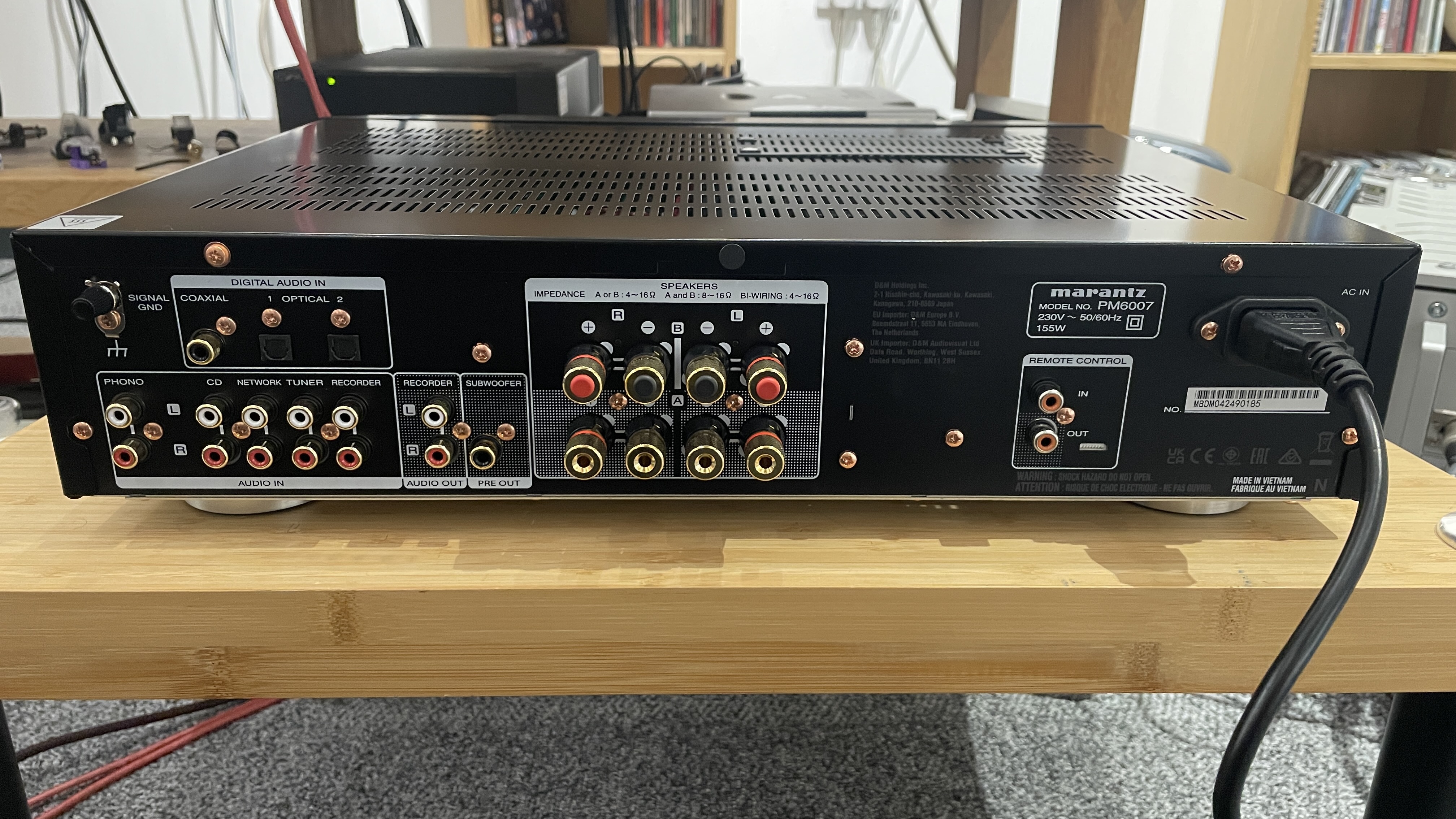
In our review of the PM6006 UK Edition, we said our only wish was that its vast connectivity included Bluetooth and a USB input, but that’s not where Marantz has sought to improve its 6000 Series line. Instead, the enhancements are centred around the performance – and who can argue with that?
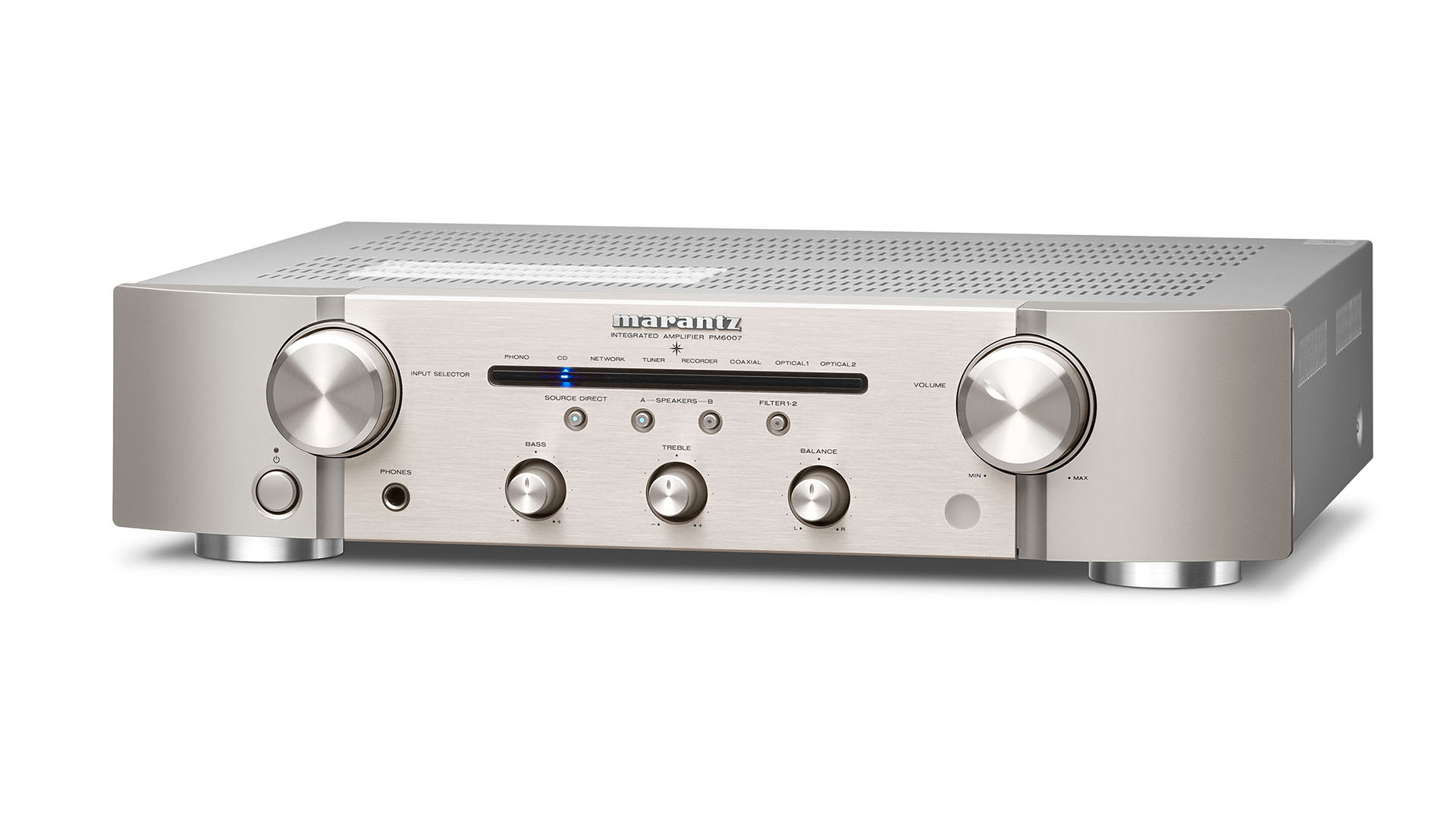
Power 45W per channel
Inputs RCA x4, MM phono input, coaxial, optical
Headphone jack 6.3mm
Available finishes Black, silver-gold
Dimensions (hwd) 10.5 x 44 x 37cm
When it first launched in 2020, Marantz implemented a new DAC chip into the PM6007 based on the AKM AK4490 – which replaced the Cirrus Logic CS4398 found in its predecessor.
However, a fire at AKM's factory in 2021 stopped production and ultimately forced Marantz to swap the chip for ESS Technology's well-regarded ES9010K2M. The company's engineers worked hard to tune the revised DAC module to sound the same. Any PM6007 with a serial number higher than *70001 has this new chip. Our new review sample's serial number is MBDM042490185.
This is complemented by two digital filters – a slow roll-off and sharp roll-off – that users can choose between when playing from a source connected to either of its two optical or single coaxial inputs. Such versatility has trickled down from the brand’s more premium digital processors, such as those built into the SA-10, SA-12SE and SA-KI Ruby.
In an effort to improve performance across the analogue inputs (of which there are four line level, plus an MM phono), new components in the power amp and phono stages have been swapped in. The latter has also benefitted from upgraded circuitry – similar to that found in the PM7000N’s phono stage – to achieve a higher signal-to-noise ratio.
And while the entry-level amplifier still doesn’t have a USB input or Bluetooth, Marantz has added a subwoofer output to accommodate those who want to add extra thwack to their stereo set-up.
Build
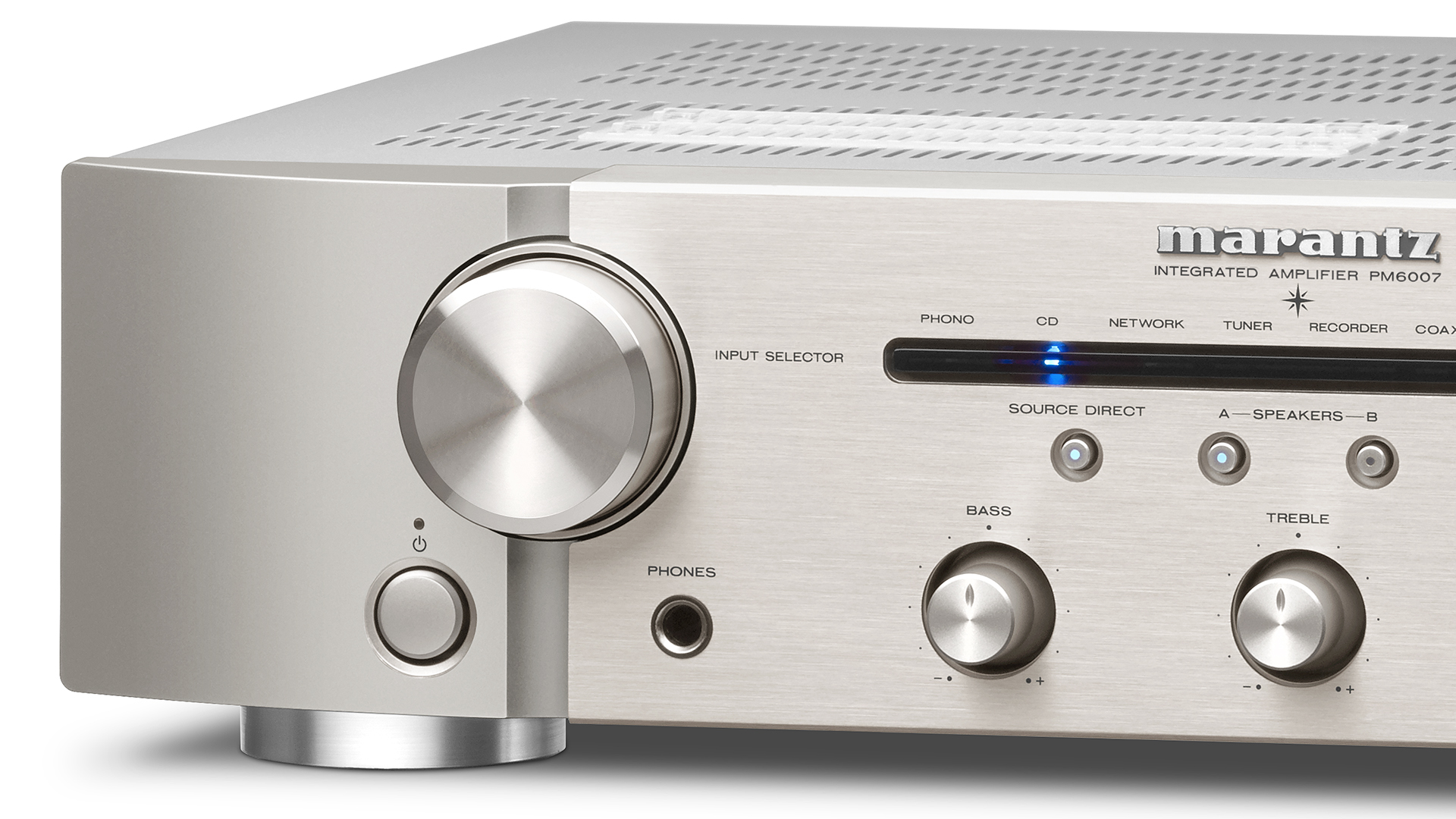
Styling-wise, the PM6007 is more or less a carbon copy of its predecessor – and indeed the model that came before that. In fact, Marantz hasn’t revamped the aesthetic much at all in the line’s 13-year history. Placed side-by-side, only the odd finish and button differential would distinguish the new PM6007 from the PM6002 released in 2007, apart from the model number printed on the facade. That familiarity is disappointing.
Moving away from appearances, this is a well-constructed, well-finished chassis that, while perhaps too densely populated with dials for some minimalist tastes, offers traditional hi-fi appeal.
Sound
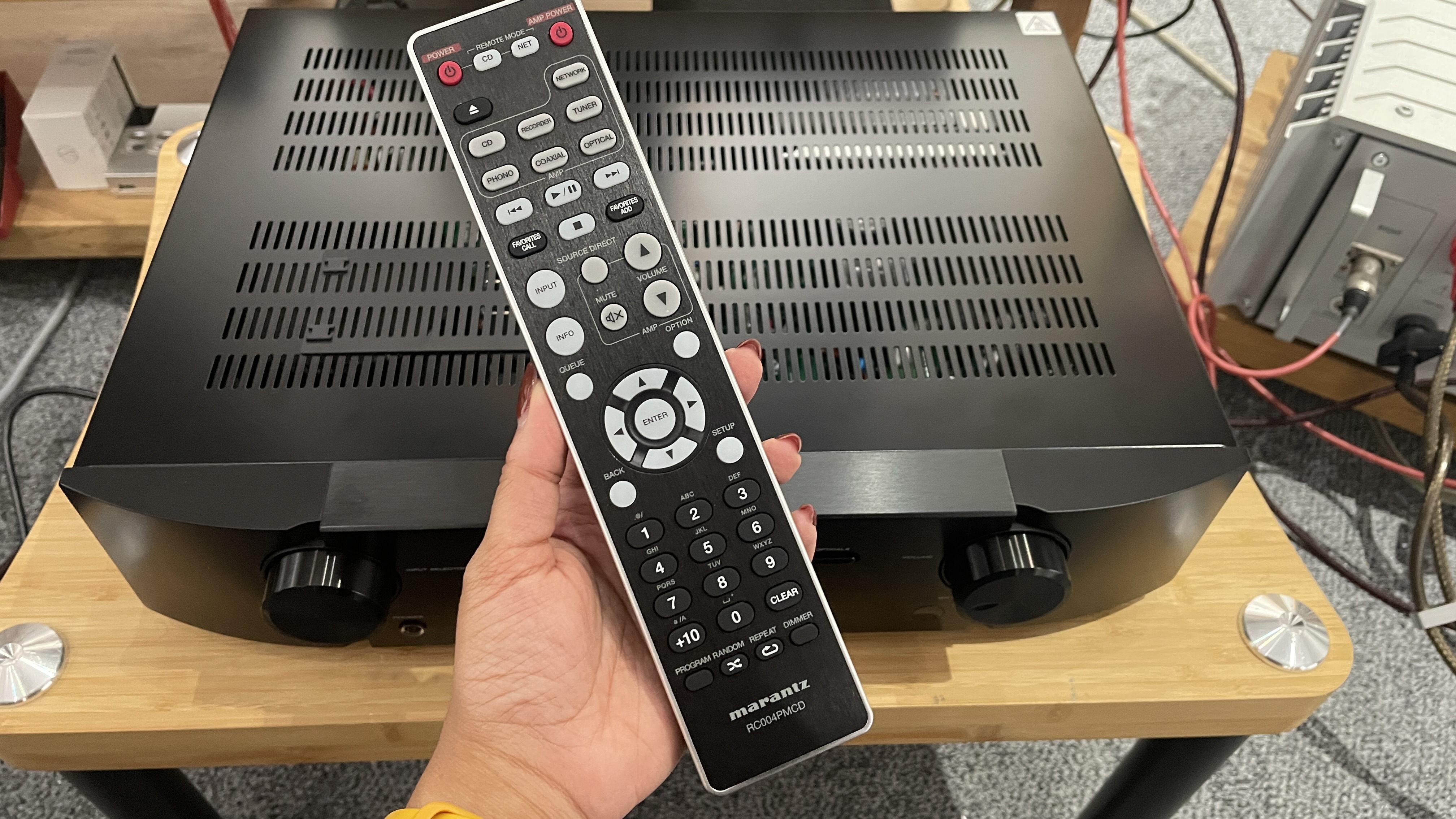
The clearest evidence of the line’s evolution lies in the PM6007’s performance. Its sonic character is as familiar as its casework: smooth, full-bodied and balanced, with a pleasing spaciousness. Like its predecessor, it’s about as agreeable a performer as you could ask for at this price.
Where it pulls away from the PM6006 UK Edition is in its greater clarity, precision and rhythmic punch. Marantz has traded some of that smoothness for a bit more oomph, as well as tightened up the bass, and the result is a more spirited presentation.
The dramatic opener of Portishead’s live performance of All Mine comes through with more presence, while the PM6007’s clearer disposition also makes more of the special occasion provided by the accompanying 35-piece orchestra. Move onto Högni’s rhythm-driven Moon Pitcher and the layers of ambient strands are more cohesively entwined, the new Marantz’s musicality rigorously precise.
Textures take on new levels of tangibility, too. The melodic finger-picking underpinning Matt Berninger’s acoustic-led Last Song is subtler, both in terms of the way the notes are formed and how they flow dynamically.
His characteristically brooding, contemplative vocal rises confidently above the aqueous acoustics, but the PM6007’s vocal delivery doesn’t feel as rock-solid and grounded as its predecessor’s. It’s not the end of the world, but in this regard the PM6007 has taken a small step backwards.
Marantz has done well to maintain consistency across the connections on offer, with the DAC, headphone output and phono stage all proving strong. Over coaxial, a little clarity and precision is sacrificed, but the fullness and dynamism remain intact. We prefer the slow roll-off filter (indicated by a blue LED) for its slight edge in exactness and naturalness over the warmer, more rounded sharp roll-off, signified by a purple LED.
That performance reveals itself through the phono stage and 6.3mm front-panel headphone output, too – it’s cohesive and punchy, but falls a little short of the clarity and sparkle offered through the line-level.
We still have our original PM6007 sample and in comparison, the revised DAC module used in the current production model sounds a little cleaner and clearer. There is slightly more punch too, though this is countered by small losses in terms of subtlety and finesse. Tonally and in terms of detail resolution, there isn't a significant difference. When it comes to analogue performance, the current production sounds unchanged from the original, leaving the PM6007 one of the best amplifiers at this level.
Verdict
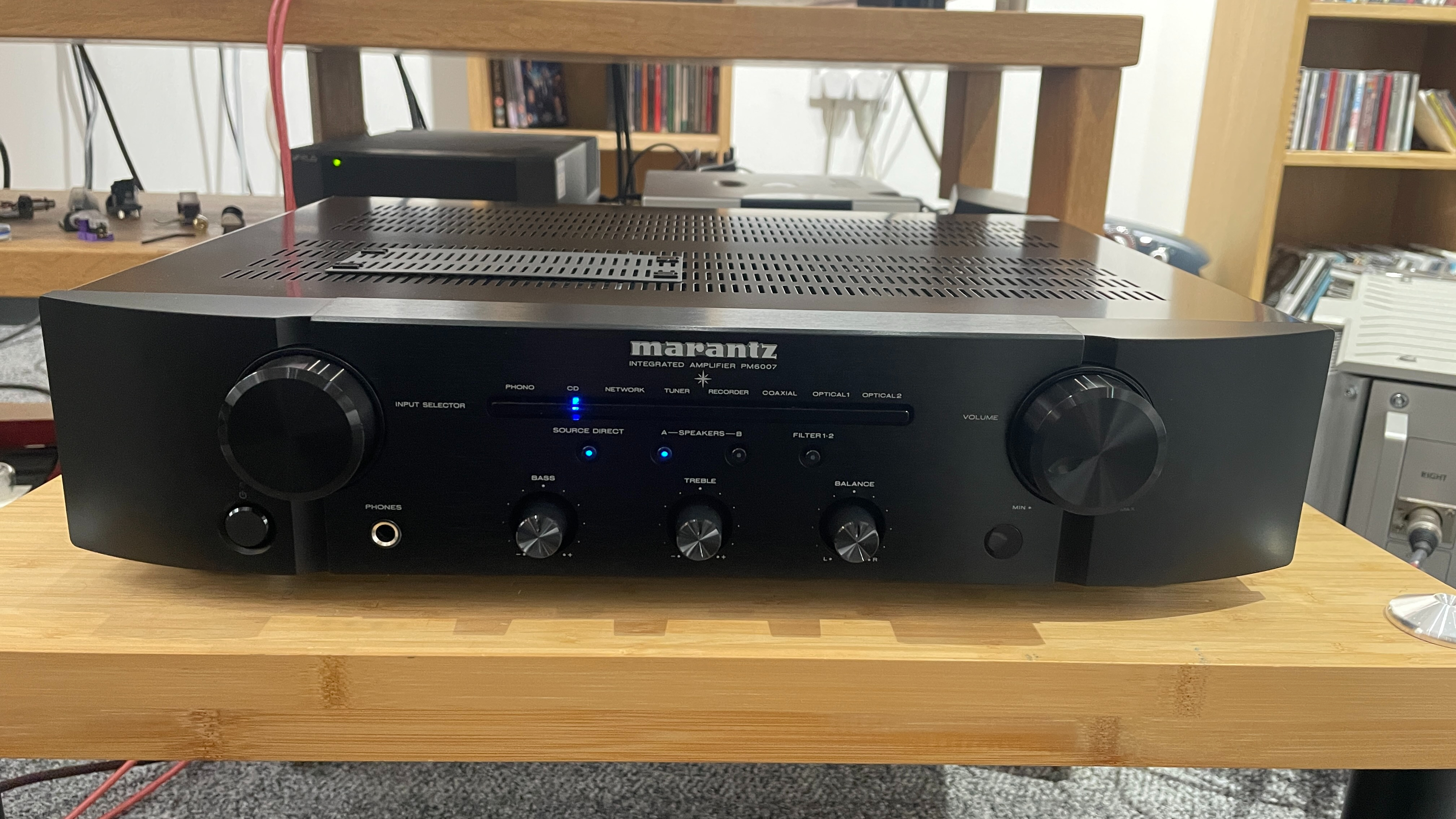
The Marantz 6000 Series has allowed the company to have a firm grip on the budget hi-fi market over the past few years, and with the arrival of the PM6007, the amplifier line has been strengthened yet again – picking up multiple Award wins in recent years.
Newer rivals, such as the fantastic Rotel A8, have brought fresh and formidable competition however, and we wish Marantz’s engineers the best of luck in squeezing out even more performance in the next iteration of this 6000 series amplifier.
First reviewed: August 2020. Review updated: October 2024.
SCORES
- Sound 5
- Features 5
- Build 5
MORE:
Rotel A8 vs Marantz PM6007: which budget stereo amplifier is best for you?
Also read the Marantz CD6007 CD player review
Our guide to the best stereo amplifiers
What Hi-Fi?, founded in 1976, is the world's leading independent guide to buying and owning hi-fi and home entertainment products. Our comprehensive tests help you buy the very best for your money, with our advice sections giving you step-by-step information on how to get even more from your music and movies. Everything is tested by our dedicated team of in-house reviewers in our custom-built test rooms in London, Reading and Bath. Our coveted five-star rating and Awards are recognised all over the world as the ultimate seal of approval, so you can buy with absolute confidence.
-
Gray ReplyWhat Hi-Fi? said:Marantz’s latest entry-level amp is even better than its Award-winning predecessor.
....now there's a surprise.
A small step back in vocal performance though.....and a price rise :(
Otherwise the review was predictable.
Doubt you could do much better (new) for £500. -
Mr. C Nation Fear not. The vocal performance will be back, along other vague 'improvements' when the UK version is released in 6 months., for an extra £50.Reply -
Gray Reply
You're a bit of a cynic Mr Nation.Mr. C Nation said:Fear not. The vocal performance will be back, along other vague 'improvements' when the UK version is released in 6 months., for an extra £50.
(It takes one to know one). -
eoc69 For more or less the same money you can get the audiolab 600a, which is a stunning amp compared to the just decent marantz pm 6006Reply -
Mr. C Nation When it comes to the progression of tech devices of all kinds, I am sceptical, with a dash of cynism thrown in.Reply
Back in the late 70's of the last century I came home from an auction of pro recording gear held in Studio 1, Abbey Rd. with a little early '60's Leak valve pre and power amp - about 15W. Cost me £25. Good money, then. (M. Oldfield had bought the Mellotron used on Sgt P. Who at Abbey Rd OKed the sale of that? )
I set the Leak in place of the girlfriend's solid state JVC equivalent to the Marantz 6000 range - IE all the mags' recommended default 'entry level' hi-fi amp.
She, not being in any way a 'hi-fi' buff, immediately said, "the sound is so much clearer". Her take on a really significant improvement over the JCV.
But, sceptical as I am, the fad for 12" vinyl makes me smile. The makers of turntables and associated pre-amp electronics must think they're dreaming and any minute they'll wake up to find ... -
nopiano Reply
I also fear that’s likely to be the case, along with £50 off in January sales and £100 by this time next year. I’d like to see the graph of these 600x series prices, because they always follow a similar trajectory. Perhaps it’s similar to the annual TV cycle of prices, where last years Best Buy is usually a third cheaper than the newest release and still excellent.Mr. C Nation said:Fear not. The vocal performance will be back, along other vague 'improvements' when the UK version is released in 6 months., for an extra £50. -
Mr. C Nation I kept my eye on the price of the legendary Marantz CD ?? KI in a branch of Richer Sounds, right opposite the end of my road. Sure enough, Marantz replaced it with a new model. I was in there like Flint and got the KI for £200 less than it had been the day before.Reply
This CD... KI went on to be one of the 10 best audio devices of any kind in the 40 year old publishing history of whatever hifi mag.
I expect this process is called 'product churn' or something. Whatever, it all makes work for the workers to do. -
manicm ReplyMr. C Nation said:Fear not. The vocal performance will be back, along other vague 'improvements' when the UK version is released in 6 months., for an extra £50.
Maybe just a *tad* too cynical. From the review it seems the new model is based on the previous UK variant. So I doubt there’ll be a special version this time round. -
bart ReplyJimboo said:Save an extra hundred and get the audiolab.
Would you choose the Audio lab 6000A (if that is the one you refer to?) over the Marantz PM6007? I'm interested why, as I'm currently debating which to get. Thanks!


